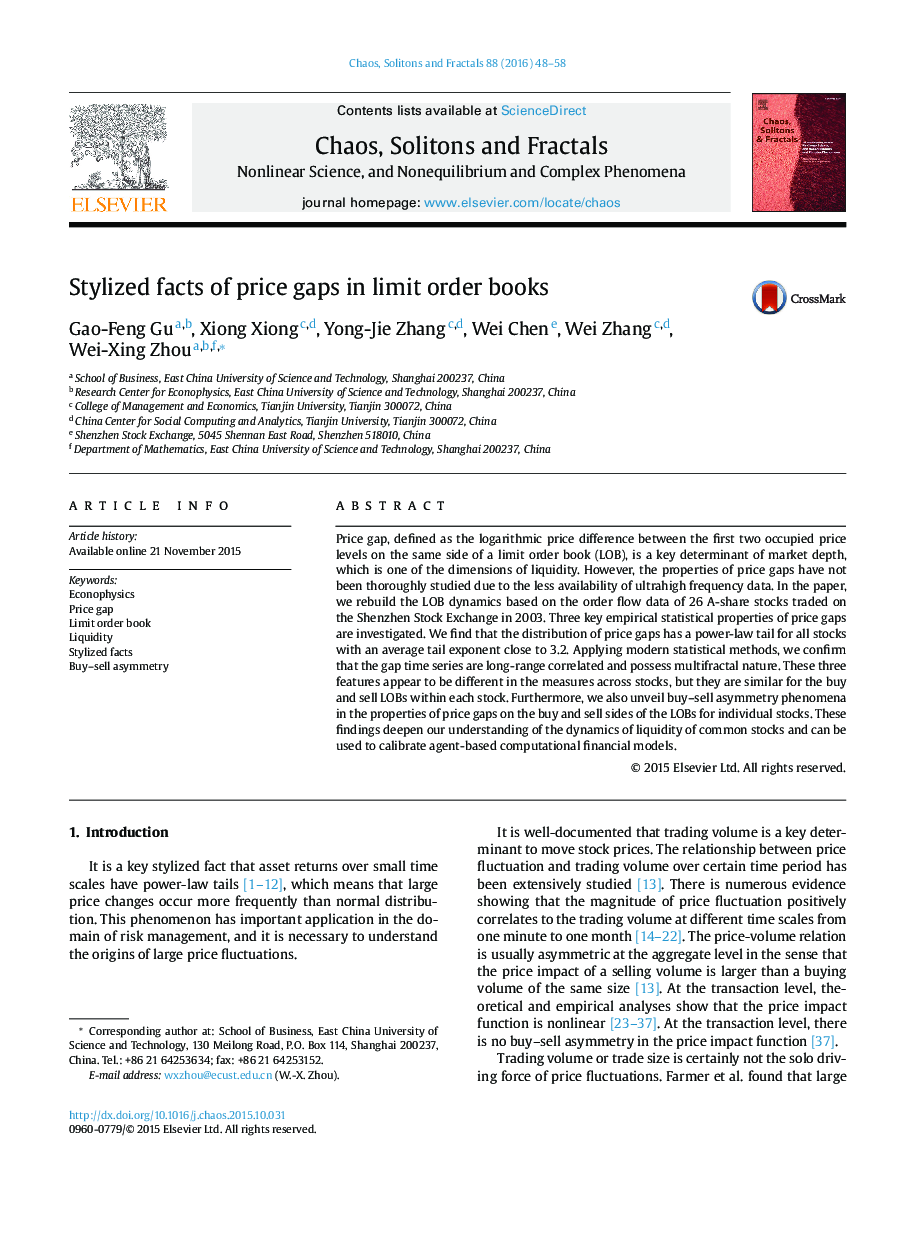| Article ID | Journal | Published Year | Pages | File Type |
|---|---|---|---|---|
| 1891143 | Chaos, Solitons & Fractals | 2016 | 11 Pages |
•We uncover several stylized facts of price gaps for Chinese stocks.•The distribution of price gaps has a power-law tail for all stocks.•Gap time series is long-range correlated and possesses multifractal nature.•The statistical properties vary from stock to stock and are not universal.•We unveil buy–sell asymmetry phenomena for individual stocks.
Price gap, defined as the logarithmic price difference between the first two occupied price levels on the same side of a limit order book (LOB), is a key determinant of market depth, which is one of the dimensions of liquidity. However, the properties of price gaps have not been thoroughly studied due to the less availability of ultrahigh frequency data. In the paper, we rebuild the LOB dynamics based on the order flow data of 26 A-share stocks traded on the Shenzhen Stock Exchange in 2003. Three key empirical statistical properties of price gaps are investigated. We find that the distribution of price gaps has a power-law tail for all stocks with an average tail exponent close to 3.2. Applying modern statistical methods, we confirm that the gap time series are long-range correlated and possess multifractal nature. These three features appear to be different in the measures across stocks, but they are similar for the buy and sell LOBs within each stock. Furthermore, we also unveil buy–sell asymmetry phenomena in the properties of price gaps on the buy and sell sides of the LOBs for individual stocks. These findings deepen our understanding of the dynamics of liquidity of common stocks and can be used to calibrate agent-based computational financial models.
